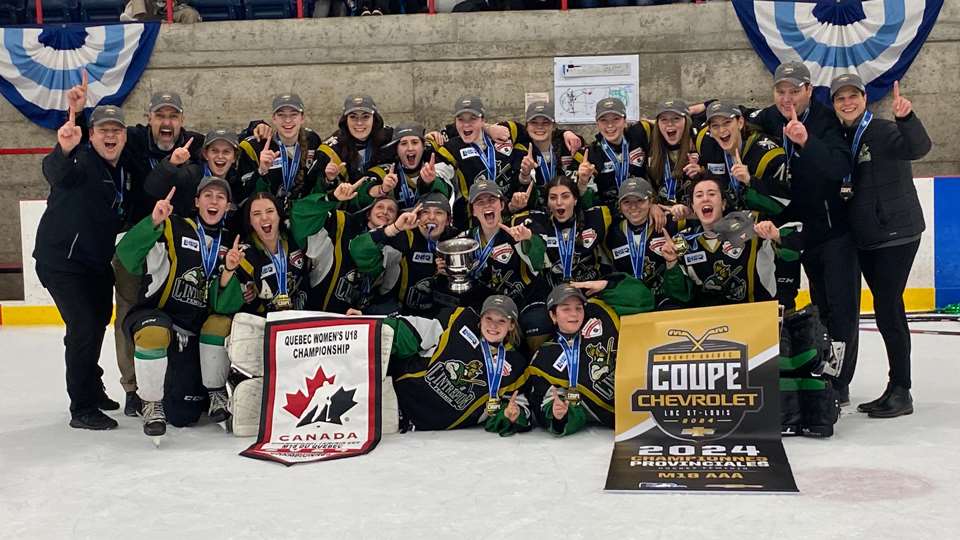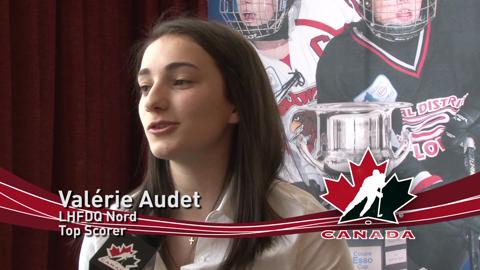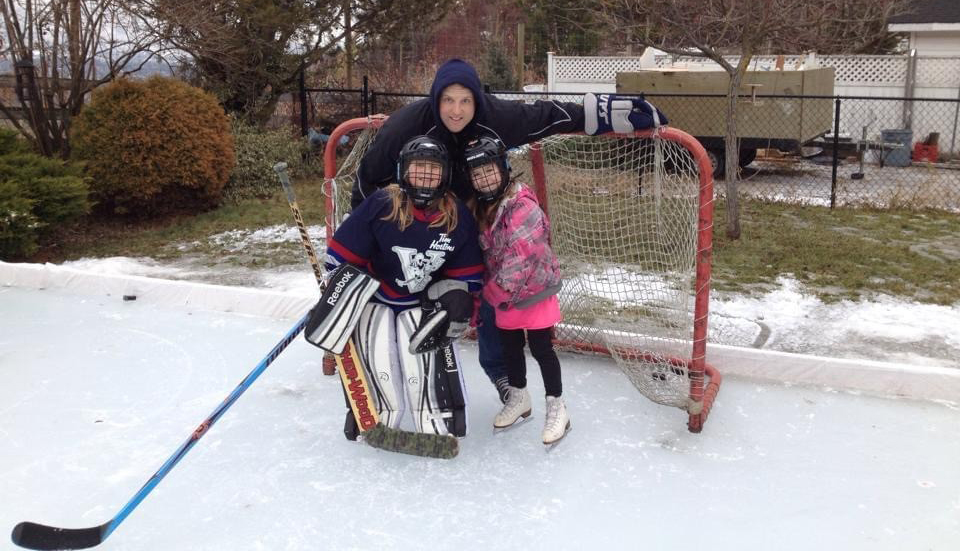
Schedule
Team Canada (Men)
IIHF World Junior Championship | Dec. 26, 2024-Jan. 5, 2025
Spengler Cup | Dec. 26-31, 2024
4 Nations Face-Off | Feb 12-20, 2025
IIHF U18 World Championship | April 23-May 3, 2025
IIHF World Championship | May 9-25, 2025
U17 World Challenge | Nov. 3-9, 2024
Hlinka Gretzky Cup | Aug. 5-10, 2024
Junior A World Challenge | Dec. 9-15, 2024
National Junior Team vs. USPORTS | Dec 12-13, 2024
Search

It's Their Game Now
Women’s Midget Hockey Grows Leaps and Bounds

Danielle Goyette remembers a time when girls didn’t belong in hockey. But it’s likely that more than 12,500 Midget-aged girls currently playing the game in Canada don’t.
With the exponential rate the female game has grown in this country, especially in the last decade, playing hockey is simply a reality for them at a young age and is no longer a far-fetched dream like it was for Goyette growing up.
"It’s amazing," said Goyette, a 16-year veteran of Canada’s National Women’s Team who announced her retirement from the game in January 2008 after two Olympic gold medals and eight world championships. "For them, they grow up and it’s normal to play hockey. It’s normal to have good ice time when they play the game, when they practice. Us, when we were practicing – well, we never even practiced, we just only played – but it was Saturday nights at 11 to 1 a.m.
"Girls didn’t have good ice time because they were not supposed to play hockey. Now, you grow up and you have everything available ... it reminds me of the cell phone. Fifteen or 20 years ago, we never had them but now, the young kids are like ‘What? You didn’t have that?’ I feel like women’s hockey is changing as fast as the world. It’s improving year after year."
The reality is girls are growing up with more opportunities than they’ve ever had before and year after year, things do keep getting better.
Now, they can start skating with all-female teams in minor hockey and there’s a good chance there will be a skilled female coach on the bench. At the Midget level, there are high-quality AAA leagues across the country, including Alberta, Saskatchewan, Ontario, B.C., and Atlantic Canada, for players to flourish and hone their skills.
Those leagues have become a hot spot for potential members of the National Women’s Under-18 Team, which has exposed the Midget age group to women’s hockey scouts.
Last year, the first-ever IIHF World Women’s Under-18 Championship marked a monumental step in the development of the women’s game. The inaugural Esso Cup, which will crown the first national champion at the Midget level, is just another glowing example of how far the women’s game at this level has come.
Another good measuring stick for the growth at the Midget level came in 2002-03 when the number of players in Canada bypassed the number of senior-aged women playing the game.
"That’s a sure indicator of how the game has changed," said Hockey Canada’s director of female hockey, Julie Healy. "Originally, it was a senior female hockey game where the bulk of players were playing senior and the grassroots were growing."
That season, there were 8,492 Midget female players and senior registrations were at 4,470. Last year, that number ballooned to 12,512 Midget players.
"Little girls see that just like their brothers, they can play," said Healy. "It’s now become commonplace for girls to play hockey at a young age whereas in 1990, when the first world championship was held, it was predominantly senior women that played hockey."
Hockey Canada also attributes a big portion of growth at the grassroots level to the 1998 Nagano Olympics, where women’s hockey hit sport’s biggest stage for the first time in history. Suddenly, the world was watching and it became very visible to kids and parents that girl’s hockey was a feasible option.
"The problem before (the 1998 Olympics) with women’s hockey was parents decided to put their girls in ringette because that was more like the ‘girls’ sport," said Goyette, now the head coach of the University of Calgary women’s hockey team. "But after the Olympics, I think it opened a lot of eyes in saying, ‘Yes, my daughter could one day go to the Olympics and play hockey.
"After that, I think the sport grew like 400 per cent."
While some small towns and districts in Canada struggle with female participants, forcing the girls to play with boys, the culture has adapted in the sense that it’s now acceptable and common to enroll a young girl in minor hockey.
"Little girls start playing hockey at the same time as little boys," added Healy. "When I look at the group of athletes that made up our national under-18 team this year – you talk to them about the fact that little girls didn’t play. Half of them weren’t even born or were just born when the first world championship took place.
"For them, their perspective is: ‘Girls have always been able to play, what are you talking about?’"
For more information: |
- <
- >
































 And that’s exactly what he’s done. This past summer, Roberston built a dressing room for the Lakers inside Kal Tire Place. A business owner and contractor by trade, Robertson covered the majority of the construction costs — close to $7,000 — and secured sponsorship funding to cover whatever was outstanding.
And that’s exactly what he’s done. This past summer, Roberston built a dressing room for the Lakers inside Kal Tire Place. A business owner and contractor by trade, Robertson covered the majority of the construction costs — close to $7,000 — and secured sponsorship funding to cover whatever was outstanding. 













